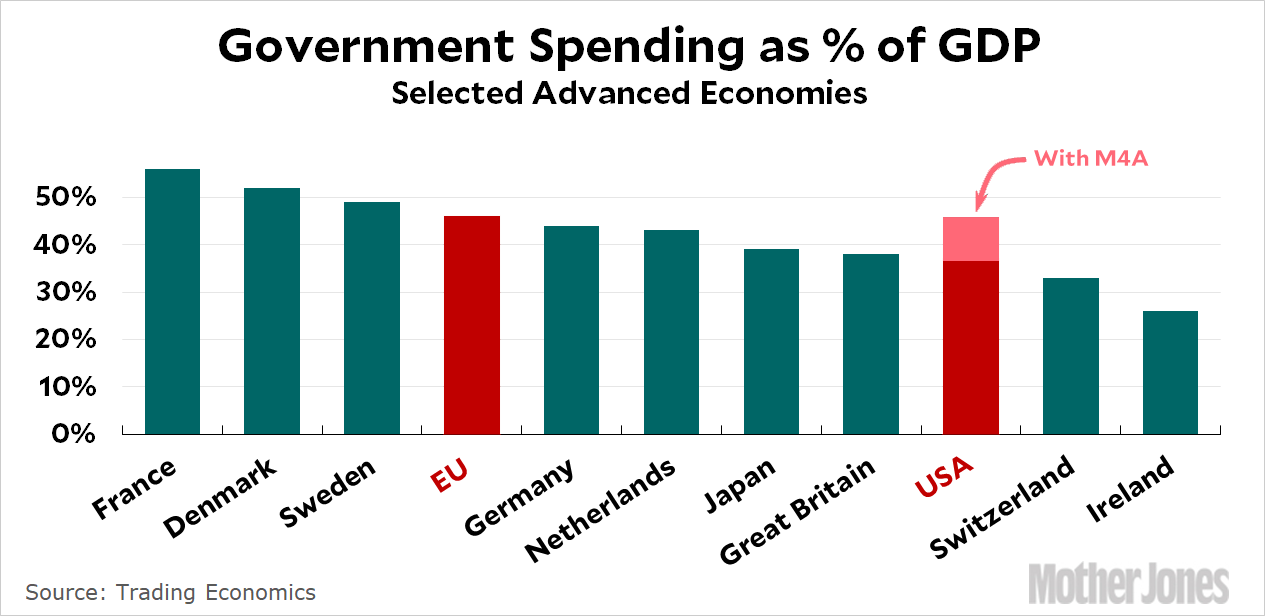For many years, Republican primaries have been dominated by contests over who can produce the most ridiculously wealth-friendly tax cut with little concern over cost. It appears that this year’s Democratic primary is starting to move in the same direction, with candidates competing over who can propose the most comprehensive list of left-friendly programs with little concern over cost.
Maybe this is fine. In real life, it’s not much more meaningful than all those tax cut plans. It’s just a way of showing where your heart is, not a serious attempt to suggest that all this stuff is going to be enacted.
But there are some big-picture restraints that are still worth considering for those of us who continue to consider ourselves reality based. Let’s start with current government spending:
- Federal: $4.5 trillion
- State and local: $3.0 trillion
- Total government spending: $7.5 trillion
Now let’s add in Medicare for All, since it’s a point of virtually unanimous agreement on the left. Various levels of government already account for about 45 percent of all health care expenditures, so let’s assume we can take over that pot of money and need to find funding only for the balance:
- Total health care spending: $3.5 trillion
- Current government share: $1.6 trillion
- Total net cost of M4A: $1.9 trillion
Now, I know that you all have brilliant plans for how M4A will save money, which means we won’t actually have to spend that full $1.9 trillion. But this is mostly a pipe dream. For now, then, let’s stick with the full figure. This means that total government spending, once we add M4A, comes to about $9.4 trillion.
American GDP last year clocked in at a hair over $20 trillion. So current spending plus M4A comes to 46 percent of GDP.
I don’t know about you, but this is roughly the highest number I’m comfortable with. There are a few countries that spend more, but 46 percent is the EU average and seems like a reasonable ceiling, especially since we’ll almost certainly drift higher than this as health care and retirement costs increase.¹

So here’s my question: if you want lots of other goodies, there are two choices. First, reduce other spending to make room. Second, don’t worry about that 46 percent total spending number. It’s just centrist rubbish anyway.
So which is it?
¹Don’t worry about taxes. For the purposes of this exercise, just assume that we impose taxes of some kind that amount to about 45 percent of GDP. You may imagine them to be as progressive as you wish.













